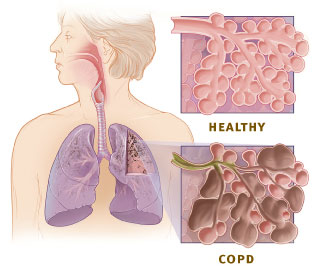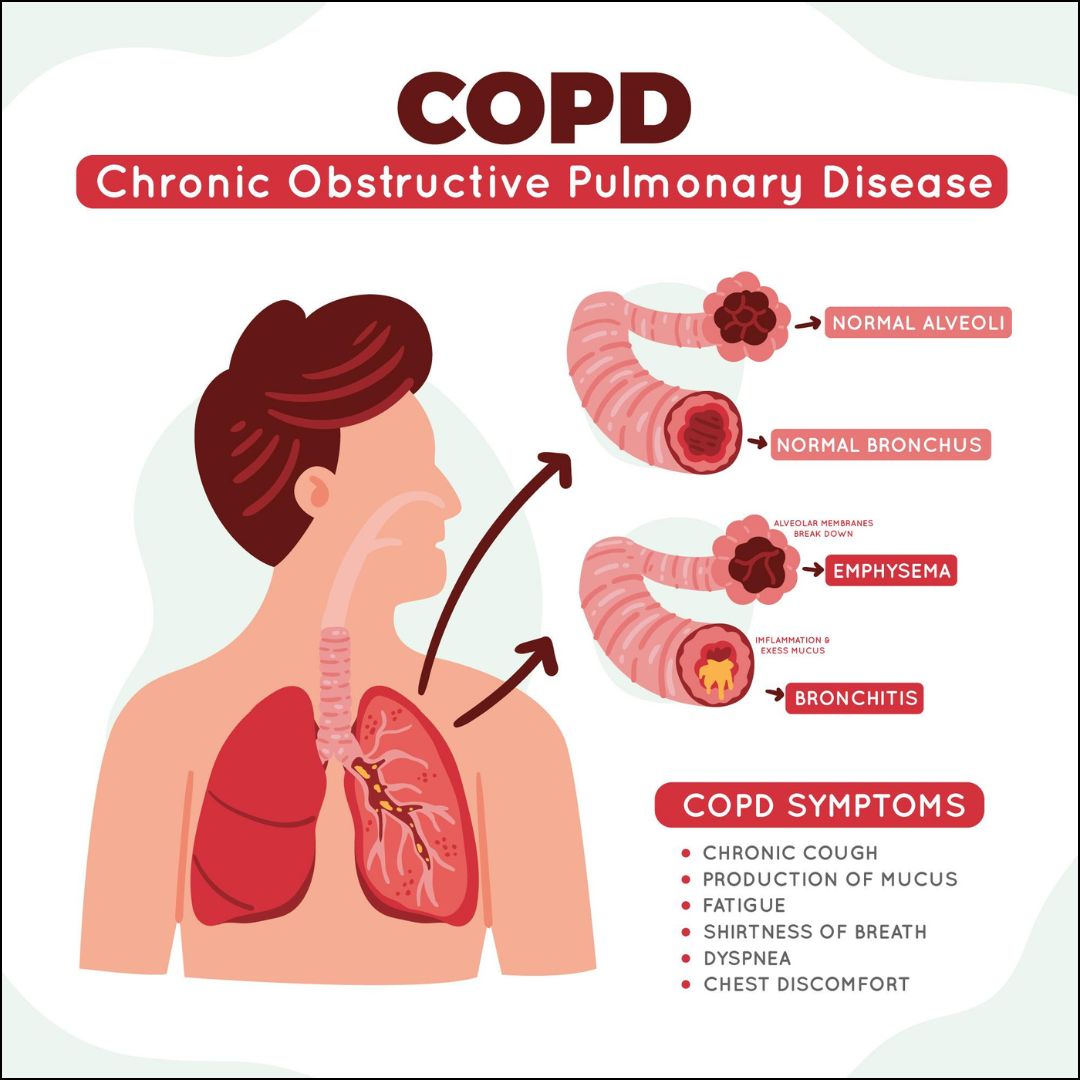COPD
Getting Your VA Disability Benefits for COPD
Chronic obstructive pulmonary disease (COPD) is commonly found among veterans and causes significant difficulties with breathing. This respiratory disability can result from environmental exposures during military service, especially exposure to burn pits, mustard gas, and lewisite. The COPD VA rating ranges between 10% and 100%.
We explain more about how veterans may develop COPD because of their military service, how the VA rates COPD, and what veterans can do if they cannot work because of their COPD.


What is COPD?
Chronic obstructive pulmonary disease (COPD) refers to a group of lung conditions that make it hard to breathe. Common forms of COPD are emphysema and chronic bronchitis. In emphysema, the air sacs in the lungs are damaged, making it challenging to get oxygen in and carbon dioxide out. Chronic bronchitis involves long-term inflammation of the airways, causing coughing with mucus.
COPD is a significant health issue, affecting more than 15 million Americans, and is consistently one of the leading causes of death in the U.S. Research suggests that over 50% of adults with low lung function weren’t aware they had COPD.
For veterans, the risk of developing COPD is even higher. Exposure to certain chemicals, dust, and smoke during military service contributes to this increased risk. Smoking is also a significant cause of COPD, and veterans are more likely to be smokers compared to the general population.
COPD doesn’t just affect a person’s lungs. It can lead to limitations in daily activities and increased hospital visits and can coexist with other chronic diseases. We will explain more about these comorbidities later.
COPD VA rating
The VA rates COPD under diagnostic code 6604 in the Schedule of Ratings for “Chronic obstructive pulmonary disease.” The VA bases a veteran’s rating on the results of different lung testing, which we explain below.
Rating criteria for COPD:
Description |
VA Rating |
Column 3 |
|---|---|---|
FEV-1/FVC less than 40%
|
100% |
$3,831.30 |
FEV-1/FVC of 40 to 55%
|
60% |
$1,395.93 |
FEV-1/FVC of 56 to 70%
|
30% |
$537.42 |
FEV-1/FVC of 71 to 80%
|
10% |
$175.51 |
The VA uses several “pulmonary function lung tests,” or PFTs, to measure the impact of COPD on your lungs. These include:
- Forced Expiratory Volume in 1 Second (FEV-1). This test assesses how much air a person can exhale forcefully in one second.
- Forced Vital Capacity (FVC). FVC measures the overall lung capacity.
- Diffusion Capacity of the Lung for Carbon Monoxide by the Single Breath Method (DLCO-SB). The test measures how effectively the lungs transfer gas to the bloodstream.
How long does it take to get VA disability for COPD?
Generally, the process for receiving VA disability benefits for COPD can take several months to years. The VA reviews each case individually, assessing medical evidence and service records to establish a connection between the veteran’s military service and COPD. While the wait time for an initial decision typically takes a few months, veterans who are denied benefits or granted a low rating they disagree with may spend much longer appealing for their full benefits.
Veterans experiencing severe hardships, such as financial distress or terminal illness, can request expedited processing. This option is also available for Medal of Honor and Purple Heart recipients, former prisoners of war, and veterans of advanced age. Specific age requirements vary depending on whether you are appealing at the VBA or an RO. Expedited claims are processed more quickly, helping eligible veterans receive their benefits sooner.
TDIU for COPD
Total disability based on individual unemployability (TDIU) benefits offer vital support for veterans whose COPD makes work challenging. Difficulty working may also be compounded by other conditions related to a veteran’s COPD, like anxiety or sleep apnea. Severe COPD can hinder a person’s ability to do physical tasks and affect their mood and cognitive abilities, impacting even sedentary jobs.
TDIU provides a pathway for veterans to receive the same compensation as a 100% rating, even when their symptoms do not meet the criteria for a schedular 100% rating. Veterans with COPD or other service-connected conditions that prevent them from maintaining “substantially gainful employment” may be entitled to TDIU.
To be eligible for TDIU, veterans must typically have:
1
At least one service-connected disability rated at 60% or more disabling OR
2
Two or more service-connected disabilities with at least one rated at 40% or more disabling and a combined rating of 70% or more
How VA can help
Our VA-accredited attorneys have helped thousands of veterans nationwide who can no longer work because of their service-connected conditions. Call us today for your free, confidential TDIU case evaluation. You won’t pay us unless we win your claim.
